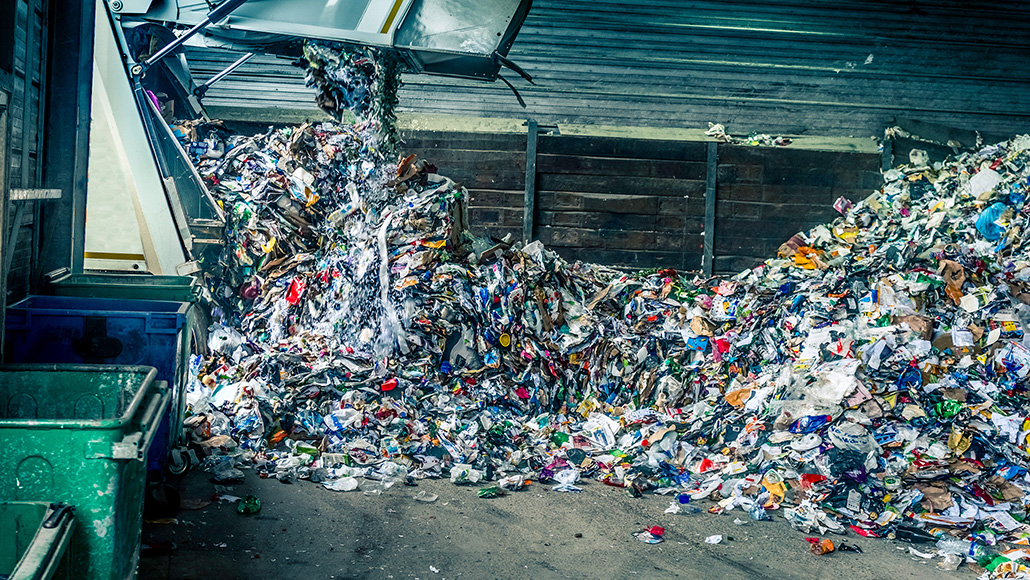Investable Opportunities to Stem the Tide of Ocean Plastic Pollution and Build a Circular Economy

With only 9% of the world’s plastics getting recycled and global plastics demand forecasted to triple by 2050, we’re in desperate need for tangible, investable solutions to avert a crisis. Where ten years ago, the urgent need to broach this subject was met with resistance, today the conditions are altogether different.
Across the globe, movements such as Break Free From Plastic and legislation like the EU’s Circular Economy Action Plan have galvanised the public. Shocking images of sea turtles maimed by straws or statistics about there being more plastic than fish in the sea by 2050 have struck a chord.
It’s clear we must rethink our current leaky, linear system and shift to something more circular. We need a system that’s consciously designed to use less materials in the production and delivery of products and that keeps materials in circulation at their highest value for as many generations as possible, if not infinitely. This way we can reduce our waste and our extraction of raw materials.
Sometimes plastic is the most appropriate material to serve a purpose, given its particular properties, other times it’s not. There is no silver bullet approach. We need to invest in both near term solutions and long term solutions with clear paths to scaling to tackle the problem of ocean plastic pollution and reduce overall environmental impacts.
The good news: we’re already seeing clear, investable solutions that can shift us in the right direction.
There are at least 60 technology providers developing transformational technologies that purify, decompose, or convert waste plastics into renewed raw materials in North America, representing a $47 billion opportunity in North America alone. Many of these technologies mean there is no limit to the number of times plastics can be recycled, thereby helping us to shape a more circular economy for plastics.
Other companies are exploring innovative new delivery models or alternative materials science. Their outputs could supersede the need for plastic packaging altogether, whether through vending machines that dispense exact amounts of product into reusable containers like Algramo, new feedstocks replacing styrofoam packaging like TemperPack or through hyper-compostable, edible straws made of sustainably harvested seaweed like Loliware.
Large banks and brands are getting on board too, recognizing the need for change. Institutions like Goldman Sachs, Citi, Comerica Bank and Engie have co-invested in our funds in order to catalyze the development of the circular economy.
If we’re to stem the tide of plastic pollution in our oceans, it’s critical that we invest across the value chain and in companies that are rethinking the system for a more sustainable future. With the current enabling conditions, from policy to consumer engagement, now is the time to do it.
This blog was inspired by the discussion in Confluence Philanthropy‘s webinar on Exploring Investor Solutions to Restore the Ocean, which I participated in with Mark Spalding, President of The Ocean Foundation, Conrad MacKerron, Senior Vice President of As You Sow, and Angela Howe, Legal Director of Surfrider Foundation.
3 Reasons Why Recycling is Good Business in America and a Key Driver of the Circular Economy

It’s Earth Day 2019 and it’s time to celebrate one of our best traditions: recycling. There’s a lot happening in our industry today: from new robots that sort recyclables to technologies transforming recycled plastics into valuable commodities. Other big themes to celebrate: opportunity and profit.
Last year, Closed Loop Partners, and firms that co-invested with us including Goldman Sachs, Citi, Google and Engie, invested over $210 million dollars in companies that are building a circular economy. The world’s largest consumer goods companies are on board too, many making public commitments to use recycled content ratios of up to 50% in their products.
Why? Because they see opportunity – and value. Natural resource extraction is expensive and landfills are unsustainable. As we shift towards a regenerative, circular economy and unlock the embodied $1 trillion value, we know that recycling is a crucial piece of the puzzle.
Today of all days, let’s take a minute to appreciate the true value of recycling in America – and let’s commit to keep going. Here’s what you need to know to celebrate recycling when talking to friends, family, and colleagues:
Recycling is Profitable: It’s good for taxpayers, municipalities, manufacturers, and investors
The recycling industry is an economic engine, providing over 500,000 jobs in America and creating more than $100 billion in revenue. The metal, paper, plastics, electronics, textiles and glass in the recycling stream are inherently valuable. While commodity markets do fluctuate, most of our waste still commands high prices, especially materials like PET, used in water bottles, which sold for $309 per ton, or clear HDPE, used in milk jugs, for $734 per ton, on average in 2018. Let’s think about the alternatives. If these materials end up in landfills, it’s taxpayers’ money that foots the bill. With a national average disposal cost of more than $50/ton, communities would have to pay over $3 billion annually in additional landfill disposal fees if these materials weren’t recycled.
Case in Point: Lakeshore Recycling Systems (LRS), Illinois. LRS serves greater Chicago and Northern Illinois, providing residential and commercial collection of recyclables, single stream recycling and construction and demolition processing services. LRS has been so successful in the past 5 years that Goldman Sachs is now their biggest investor. In their Heartland facility in 2018, they achieved revenues of approximately $65/ton and now they employ over 150 people. This best in class operation is the manufacturing feedstock for circular supply chains.
Recycling Reduces Costs & Volatility: That’s good for business
With scarce resources and increasingly volatile markets, many of the world’s largest corporations are shifting toward circular supply chains that are stable, protect the environment and reduce costs. In doing so, they avoid the volatile extraction costs embedded in manufacturing materials, like plastic. The demand for recycled materials is growing.
Case in Point: Public commitments by 37 major corporations. Thirty-seven of the world’s largest consumer brands and retailers, including Coca-Cola, Danone, Nestlé, PepsiCo, Unilever, Walmart, and others have made public commitments to use recycled plastics in their packaging within the next 10 years. Current projections indicate new real demand in North America of 5 million to 7.5 million metric tons annually by 2030. Even better? There are technologies transforming plastics waste into the building blocks for new materials that are ready to meet this demand. As these scale, a potential revenue opportunity of $120 billion in the U.S. and Canada awaits.
The Industry is Growing Here at Home: The opportunities are endless
When China stopped importing foreign scrap, the recycling industry was shaken. Business as usual no longer sufficed. But this wasn’t an end to the industry, it was a wake-up call. It pushed us to invest in domestic infrastructure, process our own waste and deliver higher quality bales of recycled materials. Materials Recovery Facilities (MRFs) that were already doing this, like Eureka Recycling in Minnesota, were less vulnerable to China’s bans. The residual contamination rates of their operations are less than 8 percent and 90 percent of their recovered material goes to markets in the state, supporting regional growth. MRFs are now identifying opportunities to up their game and invest in new equipment and technologies to enhance their performance. Innovative companies like AMP Robotics are gaining traction; they use AI and robotic arms to effectively sort materials. More and more investment opportunities are materializing. Global companies like Nine Dragons, one of the largest paper manufacturers in China, are now investing hundreds of millions of dollars on recycling infrastructure in the US.
Case in Point: Pratt Industries, Georgia. Pratt Industries is the world’s largest, privately-held 100% recycled paper and packaging company, headquartered in Georgia. This year they’re opening a new paper mill outside of Columbus, Ohio, and also opened a paper mill in Indiana. They’ve also relocated some of their MRFs to larger facilities to accommodate high demand and have pledged to invest $2 billion in the company’s U.S corrugated box manufacturing. Pratt Industries also pays New York City for all of its recycled paper and cardboard in order to meet restaurants’ demand for pizza boxes made from these recycled materials. The City of New York generates revenue of approximately $15/ton for cardboard while reducing waste, landfill costs, and greenhouse gas emissions.
Our message this Earth Day? Keep recycling as a simple way to support a circular economy.
It’s good for the planet, it’s good for cities, and it’s good for business.
Learn more at: www.closedlooppartners.com
